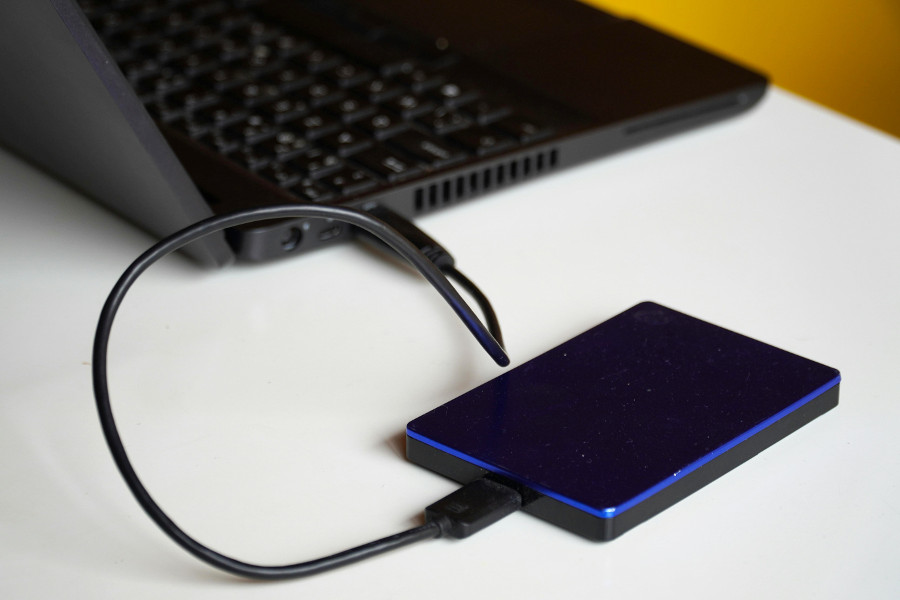Declutter Your Digital Life: Practical Tips for Organizing and Archiving Files on Your Computer and External Drives
We live in a world where digital clutter is just as real as physical clutter, if not more so. Over time, files accumulate, your desktop becomes a mess, and you can barely find anything when you need it. The result? Stress. Distraction. And the feeling of being completely overwhelmed.

But here’s the thing: organizing your digital files is one of the most effective ways to regain control over your life. Think of it as a digital detox - a way to clear the mental clutter caused by a chaotic computer or external drive. By taking some time to get rid of unnecessary files and set up a simple, intentional organization system, you can actually reduce stress, improve productivity, and make your digital environment feel like a breath of fresh air. It’s not about having a perfectly tidy system - it’s about making your digital space work for you, not against you.
So, how do we start? How do we clear out the mess that’s slowly building up inside our computers, external drives, and cloud storage?
1. Why Digital Declutter Matters
If you’re feeling stressed, distracted, or frustrated by your digital files, you’re not alone. A cluttered digital environment can weigh heavily on your mind. Just like a messy room or desk, an untidy computer or external drive can have a surprisingly negative impact on your mental state. It’s like having a constant reminder of unfinished business, and it’s exhausting.
We spend so much time plugged into the digital world, and in a sense, we’ve become disconnected from the simplicity of a clean, organized space. When our digital environment is chaotic, it’s easy to feel out of control. That’s where digital detox and minimalism come in. Simplifying your digital life isn’t just about getting rid of files - it’s about creating an intentional space that serves you.
A clutter-free digital life isn’t some unattainable ideal. It’s a choice you make every time you decide to keep only what truly matters. And this doesn’t just apply to your work documents. It’s about being mindful of every file you save, every download you make, and every app you install. Once you start embracing this minimalist mindset, it becomes easier to create a space that’s efficient, peaceful, and in line with your goals.
Read our article about digital detox here: How to Undergo a 30-Day Digital Detox: A Journey Back to Yourself.
2. The Principles of Digital Minimalism
So, what exactly does digital minimalism look like in practice? It’s not about having the least amount of files possible; it’s about being intentional with the files you keep. By following a few simple principles, you can transform your digital environment from chaotic to calm.
Minimalism Principle #1: Keep Only What Adds Value
Here’s a simple question to ask yourself: Does this file serve a purpose? If it doesn’t, it’s time to let it go. Files that are no longer relevant, duplicates, or outdated take up space and add unnecessary noise to your digital space. The goal isn’t to hold on to everything - it’s to keep what you truly need and use regularly.
Minimalism Principle #2: Embrace Simplicity in File Structure
We’ve all been there - creating an overly complicated folder system that looks organized at first but quickly becomes a labyrinth of subfolders. The trick is to keep it simple. Think in broad categories, like “Work,” “Personal,” and “Projects.” The simpler the system, the easier it is to maintain and navigate. Remember, the goal is efficiency, not complexity.
Minimalism Principle #3: Regular Maintenance
Just like you wouldn’t leave your living room in disarray for months, your digital space needs regular upkeep. The key to staying organized is consistency. Set aside time each week or month to go through your files, delete what you don’t need, and make sure everything is where it belongs. This way, clutter never has a chance to build up.
You can find a whole community online that embraces the idea of digital minimalism. Here is the subreddit: r/Digital Minimalism. It's a good place to connect with like-minded people and share practicle tips.

3. Practical Tips for Organizing Files
Now that you’re clear on the principles of digital minimalism, let’s dive into the practical side of things. Here’s how you can start organizing your files and create a system that works for you.
Start with a Clean Slate
Before you begin organizing, make sure you back up your important files to an external drive or cloud storage. This ensures that if something goes wrong, your data is safe. Once you’ve done that, it’s time for a deep clean. Start by going through your files and deleting anything that no longer serves you. Old documents, unused downloads, duplicate files - get rid of them. It’s like clearing out your closet: you make room for what matters most.
Create a Simple Folder Structure
The best way to stay organized is by creating a folder structure that makes sense to you. A simple approach works best, so try to avoid creating too many subfolders. You might want to have something like this:
- Work: For all professional documents, projects, and presentations.
- Personal: For personal photos, documents, and receipts.
- Projects: For ongoing work or creative projects you’re working on.
- Archive: For older files you don’t need right now but might want later.
This system is flexible enough to adapt as your needs evolve. And by keeping it simple, you won’t get lost in a maze of folders every time you need to find something.
Use Consistent Naming Conventions
When it comes to file names, consistency is key. The more descriptive the file name, the easier it will be to find later on. For example, “2025_Tax_Return.pdf” is way better than “doc1.pdf.” You should also consider adding dates to files to make them easier to sort chronologically. A good rule of thumb is: if you can search for it easily, you’ll find it when you need it.
Tagging and Search Functions
Most operating systems offer tagging and search features, which can be game changers when you’re trying to stay organized. By tagging your files with relevant keywords or categories, you can find exactly what you need in seconds. It’s like having a digital filing system that’s as organized as your physical one - but with a few extra tools to help you.

4. Organizing External Drives and Cloud Storage
It’s not just about your computer files. Many of us store important data on external drives or in the cloud. But without organization, these spaces can become just as messy as your desktop. Here’s how to keep them tidy:
External Drives
When organizing your external drives, replicate the same system you use on your computer. That way, you’ll be able to find files no matter where they’re stored. Don’t forget to back up important data regularly, and be proactive about cleaning up your drives by deleting outdated or unnecessary files. If you have multiple external drives, label them clearly so you can tell them apart.
Cloud Storage
Cloud storage offers a convenient way to store and access files from multiple devices, but it’s easy to get lazy and pile everything in one place. Instead, use a similar folder structure as on your computer and keep things organized by category. Cloud storage is also a great way to sync your files across devices, but be sure to review your files regularly to keep things streamlined.
5. Automate Where Possible
One of the best ways to maintain digital organization is by automating certain tasks. This reduces the mental load and ensures that your files stay organized without you having to think about it. For example:
- Backup Automation: Set up automatic backups to an external drive or cloud service, so you don’t have to worry about it.
- File Sorting Software: Tools like Hazel (for Mac) or File Juggler (for Windows) can automatically move files to the appropriate folders based on certain rules you set.
- Syncing: Use cloud services to sync files across your devices automatically. This keeps everything up to date without any extra effort.
By letting automation handle the boring stuff, you free up time and mental space for more important tasks.
6. Maintaining Digital Organization
The key to maintaining a clutter-free digital life is consistency. Just like a tidy room requires regular cleaning, your digital space needs regular attention. Set aside time each week or month to review your files. Delete what you no longer need, reorganize as necessary, and make sure your system is still working for you. These small efforts will prevent clutter from building up and ensure that your digital space stays neat and efficient.
Conclusion
A clean and organized digital space isn’t a luxury - it’s a necessity. By decluttering your digital files, you reduce stress, improve focus, and create a more intentional environment. Remember, organizing your files is an ongoing process. Start small, embrace simplicity, and make sure your system is one that serves you, not the other way around. A clutter-free digital life is within your reach, and all it takes is a few small steps to get there.



